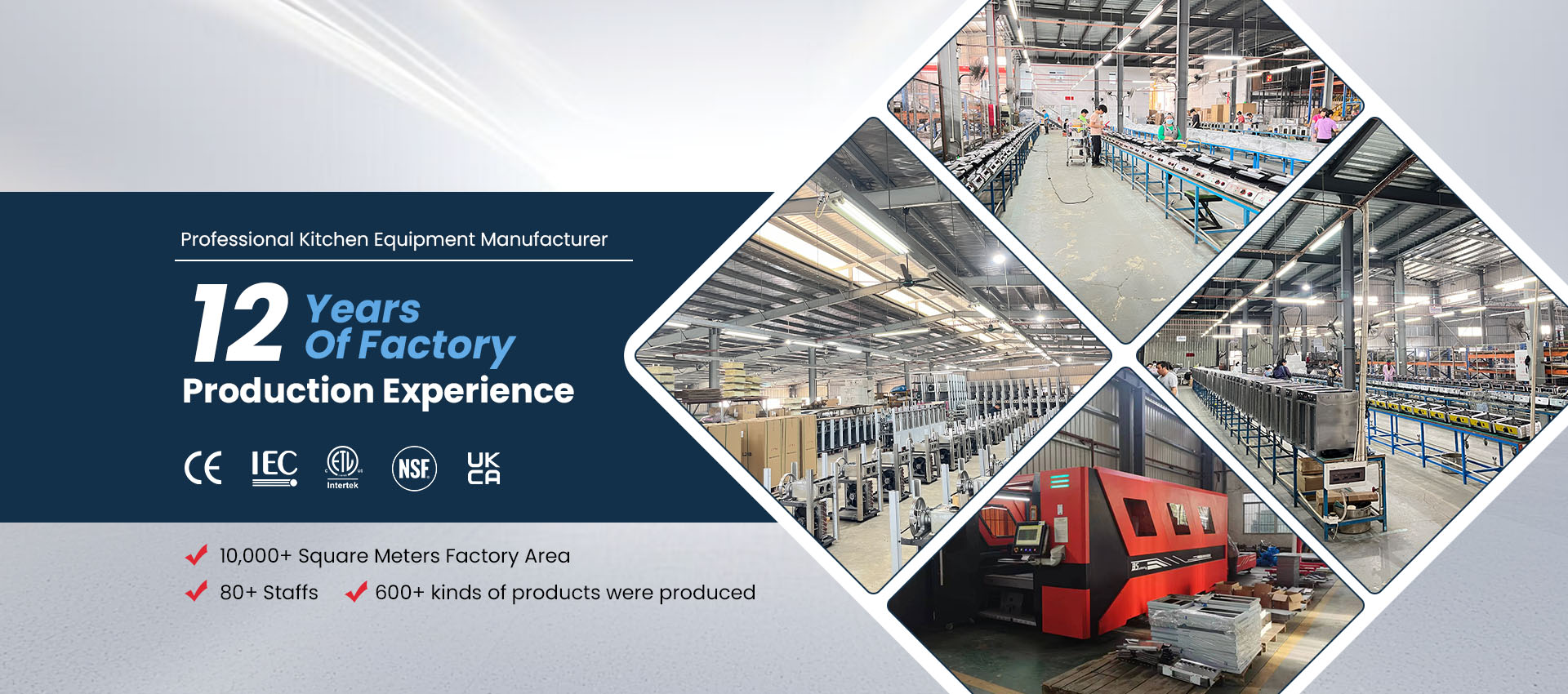Does A Gas Fryer Need Electric
When choosing a commercial fryer for your restaurant or catering kitchen, one common question arises: “Does a Gas Fryer need electricity?” While gas fryers primarily rely on natural gas or propane for heat, many modern models do include electrical components for ignition, temperature control, and safety features.
In this article, we will explain when a gas fryer needs electricity, how much power it consumes, and what to consider when installing one. We’ll also highlight how MLP Kitchen Equipment, a professional manufacturer of commercial kitchen appliances, designs energy-efficient gas fryers suitable for both small businesses and large commercial kitchens.
1. Understanding How a Gas Fryer Works
A gas fryer uses burners to heat oil through direct flame contact or heat exchange tubes. The primary energy source is gas — either natural gas (NG) or liquefied petroleum gas (LPG).
However, some parts of the fryer may still require electricity. The electric components usually serve for ignition, regulation, or safety monitoring, not for heating.
Main Energy Functions
| Function | Powered By | Description |
|---|---|---|
| Heating Oil | Gas | Burners provide direct heat for fast temperature rise |
| Ignition | Electric (in most modern models) | A spark or pilot system lights the gas safely |
| Temperature Control | Electric | Digital thermostat or sensors maintain accurate oil temperature |
| Safety Features | Electric | Auto shutoff, overheat protection, or flame sensor |
| Lighting/Display | Electric | LED indicators or control panels show operating status |
Thus, while the heat source is gas, the control system often depends on a small amount of electricity.
2. When a Gas Fryer Needs Electricity
Not every gas fryer requires a power source, but many modern models do. Here’s a breakdown:
a. Manual Gas Fryers (No Electricity Required)
Traditional or manual gas fryers rely on:
A standing pilot flame that burns continuously.
A mechanical thermostat for basic temperature regulation.
These units do not require electricity. They are simple, reliable, and ideal for outdoor kitchens or food trucks without stable power access.
b. Electronic-Ignition Gas Fryers (Electricity Required)
Most commercial kitchens today use electronic-ignition gas fryers, which require a small electrical connection (typically 220V or 110V) for:
Automatic ignition (no constant pilot flame).
Digital temperature display and control.
Safety shutoff and oil filtration system.
Electric ignition enhances energy efficiency and safety since it eliminates the need for a continuously burning flame.
3. Advantages of Electric-Assisted Gas Fryers
Combining gas heating with electric controls offers multiple benefits:
a. Energy Efficiency
The burners ignite only when needed, reducing gas waste compared to traditional pilot systems.
b. Consistent Temperature Control
Digital thermostats powered by electricity maintain oil within a precise temperature range (±1–2 °C), ensuring uniform frying quality.
c. Improved Safety
Electric sensors monitor gas pressure, flame presence, and oil temperature, automatically shutting down the system if irregularities occur.
d. Convenient Operation
Electric panels make it easier to start, monitor, and maintain the fryer — particularly in high-demand environments like restaurants or hotels.
4. Power Consumption of Gas Fryers
Even though gas fryers may include electronic components, their power demand is minimal compared to fully Electric Fryers.
| Component | Approx. Power Requirement |
|---|---|
| Ignition System | 10–30 W |
| Digital Display Panel | 5–10 W |
| Safety Sensor or Control Valve | 10–20 W |
| Total Estimated Usage | Less than 60 W |
In most cases, a standard power outlet is sufficient. This low energy consumption keeps operational costs low while delivering precise control.
5. Installation and Power Connection Tips
To ensure optimal performance, follow these installation practices:
Check voltage requirements on the fryer’s nameplate before connection.
Use a dedicated electrical circuit to avoid overloading.
For outdoor or mobile use, choose a manual pilot-ignition fryer to avoid power dependency.
Have installation handled by a licensed technician for both gas and electrical connections.
Always ground the fryer to prevent short circuits or static discharge.
MLP Kitchen Equipment gas fryers come with standardized gas and electrical inlets, making installation quick, secure, and compliant with international kitchen safety standards.
6. Gas Fryer vs. Electric Fryer: Key Differences
| Feature | Gas Fryer | Electric Fryer |
|---|---|---|
| Heat Source | Natural gas or propane | Electricity only |
| Power Consumption | Low (for ignition/control only) | High (for heating oil) |
| Heating Speed | Faster due to direct flame | Slower, more even heat |
| Temperature Control | Manual or digital | Fully electronic |
| Installation | Requires gas line and optional power outlet | Requires high-voltage power supply |
| Operating Cost | Lower in areas with cheap gas | Depends on electricity rates |
Both types perform well, but gas fryers with electric control panels offer an excellent balance of speed, economy, and convenience.
7. Why Choose MLP Kitchen Equipment Gas Fryers
MLP Kitchen Equipment, located in Jiangmen City, Guangdong Province, specializes in energy-saving commercial cooking appliances such as gas fryers, griddles, and ranges.
Product Advantages
3/4-inch gas connection compatible with most commercial kitchen systems.
Optional electric ignition and digital control panel for precise operation.
Durable stainless-steel structure for heat resistance and long life.
CE, UL, and UKCA certifications ensuring safety and quality.
OEM/ODM service available for branding and customization.
Each fryer is designed with user convenience and energy efficiency in mind — reducing gas waste while maintaining consistent cooking results.
8. Maintenance Tips for Gas Fryers with Electrical Parts
| Maintenance Task | Frequency | Purpose |
|---|---|---|
| Check power cord and plug | Monthly | Prevent electrical faults |
| Clean ignition probe and burner ports | Every 2 weeks | Ensure reliable ignition |
| Inspect thermostat calibration | Quarterly | Maintain temperature accuracy |
| Verify gas and power connection | Semi-annually | Guarantee safety and efficiency |
Proper care of both the gas and electric systems ensures long-lasting performance and lower operational costs.
9. Conclusion
Not all gas fryers require electricity — manual models operate entirely on gas, while modern electronic-ignition fryers need minimal electrical power for ignition, display, and control functions.
If your kitchen has reliable power access, an electric-assisted gas fryer offers improved precision, efficiency, and safety.
For professional-grade gas fryers that combine energy efficiency with modern control systems, choose MLP Kitchen Equipment. Their products are built for commercial durability, international compliance, and user-friendly operation — making them the perfect solution for restaurants, cafes, and catering kitchens worldwide.
Previous: How Does A Gas Fryer Work



